Menus
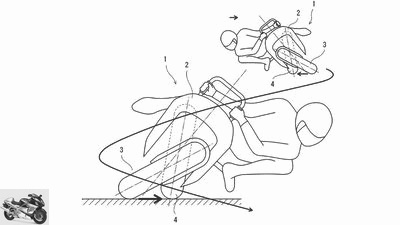
Kawasaki
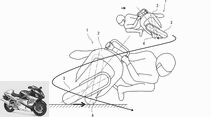

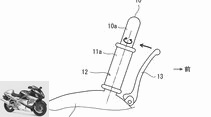
4th photos
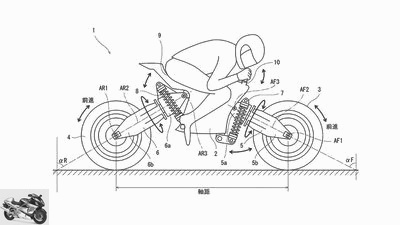
Kawasaki
1/4
In a new patent, Kawasaki revolutionized the steering technology of motorcycles.
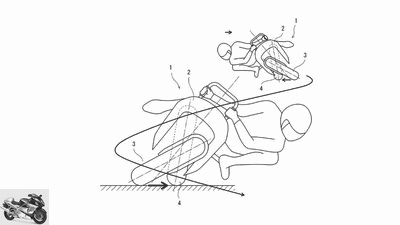
Kawasaki
2/4
Cornering is initiated by shifting weight and electrically tilting wheels.

Kawasaki
3/4
Instead of a handlebar, the driver only has a U-bracket.
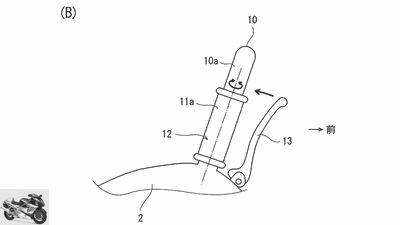
Kawasaki
4/4
However, the throttle grip and conventional brake levers are retained.
Kawasaki patent eliminates the need for handlebars
Inclination technology instead of handlebars
Motorcycle manufacturer Kawasaki has patented a technology that is supposed to move motorcycles in lean positions and around bends without conventional handlebars.
W.hen the ingenuity of the Kawasaki engineers has its way, at some point in the future there could be motorcycles on the road that have little in common with current bikes. It seems clear that the electric motorcycle will come. In the latest patent from the Greens, even the handlebar is on the cross-off list.
Shifting weight as a steering impulse
The patent shows a two-wheeler on which the driver assumes a very sporty sitting posture. Both wheels are each guided on a generously dimensioned swing arm. These are supported on the main frame by means of a mono spring strut with deflection. However, the design has nothing more in common with a conventional motorcycle, because now the patent’s highlight comes: Both swing arms are provided with a joint around which they can be rotated in the longitudinal axis using an integrated electric motor. There is no provision for turning the front wheel about a steering axis. The driver specifies the steering request by shifting weight. Sensors detect this and tilt the front and rear wheels accordingly. Since the front wheel leans much more strongly than the rear wheel, cornering is initiated. The driver himself only grabs a U-bracket, which integrates a conventional throttle grip and conventional brake levers.
And the drive? Kawasaki relies on electric wheel hub motors in both wheels – i.e. all-wheel drive. The battery should be located where the internal combustion engine would otherwise take its place. Does it all sound very futuristic? It is. But the patent specification shows the directions in which possible motorcycle revolutions could go.
Related articles
-
Yamaha Tritown: electric tricycle with tilting technology
Motorcycle fair in Milan EICMA 2019 Presented by Yamaha Yamaha Tritown electric tricycle with tilting technology Yamaha has launched a new motorized tricycle …
-
Harley-Davidson patent: technology for self-balancing
Harley-Davidson. New Harley-Davidson patent application Technology for independent balancing A new patent application from Harley-Davidson suggests that…
-
BMW electric motorcycle: New patent specification emerged
Theme special Everything about BMW Motorrad BMW BMW electric motorcycle New patent appeared BMW is also concerned with the topic of electric motorcycles….
-
On the move: Benelli 750 Sei, Honda CBX 1000, Kawasaki Z 1300
Bilski 17th photos Bilski 1/17 Who is the widest in the whole country? The angle of spread of the driver’s legs provide information. Bilski 2/17 With…
-
Technology 20 years of progress in motorcycle construction: Honda Fireblade – old against new
fact 14th photos fact 1/14 At the end of 1991 Honda presented the first Fireblade and shook the athlete Olympus permanently. We compare the Fireblade SC…
-
Technology Kawasaki Z 1000 EFI Archive 1980
archive 17th photos archive 1/17 The control unit tells the system what to do when and with what quantity. archive 2/17 Instruments like on the Mk II;…
-
Gargolov 20th photos Kawasaki 1/20 Kawasaki 2/20 Kawasaki 3/20 Kawasaki 4/20 Kawasaki 5/20 Kawasaki 6/20 Kawasaki 7/20 Kawasaki 8/20 Kawasaki 9/20…
-
Driving report new Kawasaki ZX-9R
Driving report new Kawasaki ZX-9R Change on the fly Not even two years on the market, Kawasaki is pushing a completely renovated version of the…
-
fact 24 photos Kawasaki 1/24 Kawasaki 2/24 Kawasaki 3/24 Kawasaki 4/24 Kawasaki 5/24 Kawasaki 6/24 Kawasaki 7/24 Kawasaki 8/24 Kawasaki 9/24 Kawasaki…
-
Kawasaki, KTM, Triumph and Yamaha
Jahn 20 pictures Triumph 1/20 Triumph 2/20 From the development phase: a model with a low-lying silencer. Triumph 3/20 Triumph 4/20 The …